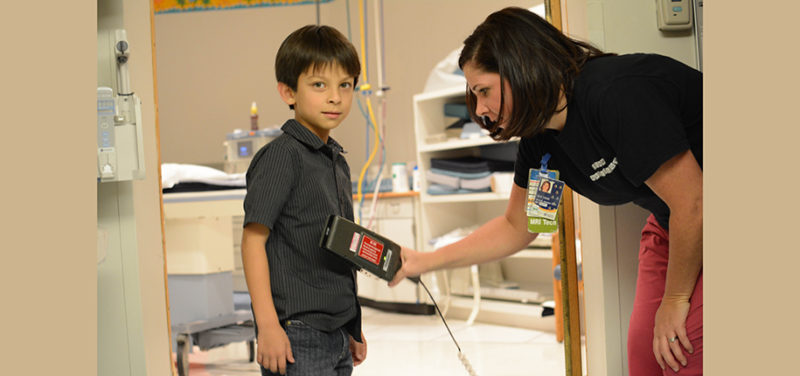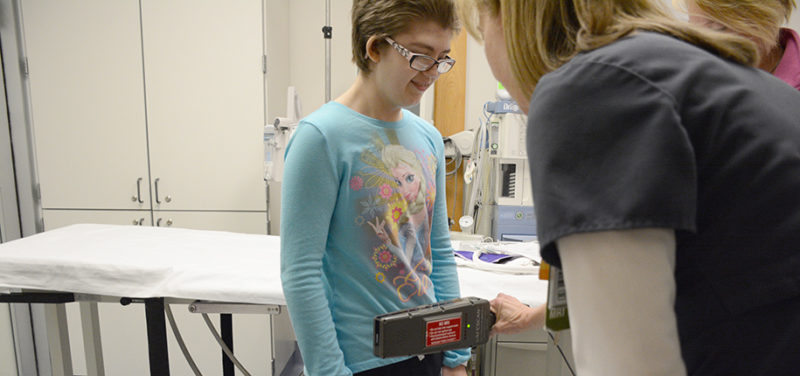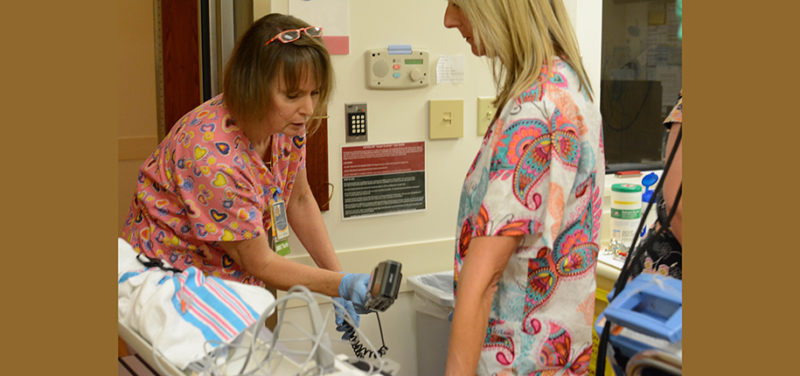
Our MRI Department may not have magic wands, but we do have metal-detecting wands that work like magic wands. Anyone who has been through the MRI imaging process knows all too well that there will always be an extensive MRI safety screening procedure involved at some point during a visit. This is a very important step for patient and employee safety in the MRI environment. In fact, the MRI safety process is so important, it is the very first lesson MRI technologists learns in their schooling: safety first, then the physics and the know-how for capturing diagnostic images.

After the required verbal screening is completed on a patient–in which everyone going into the scan room is questioned about potentially dangerous implanted devices or hardware (such as pacemakers or neurostimulators)–all loose items are locked away in a provided locker. This leads to the final step before entering the MRI scan room, the step where all the magic happens! Any individual who will be entering the room will stop before the big MRI door and the accompanying technologist will wave a wand over those ready to enter. Much like a fairy-godmother, they will wave in circular patterns as if casting a protective spell over the patient and their family. Instead of glittering pixie dust, our wands produce twinkling lights with alarming sounds if ferrous metal is detected.

Like magic, a bobby-pin is found! Then a hidden watch, a sneaky cellphone and a forgotten fidget spinner. Although these items may not have caused huge amounts of damage to the scanner, there is still the potential for image quality issues (from small bits of metal lost in the mechanism) and for patient harm as the machine grabs hold of any iron in the MRI environment. Our magic wan– I mean our metal-detecting wand helps us in finding those concealed things that may fly under the radar. The abilities our techs possess when holding the metal-detecting wand are not really magic, but rather centuries of science that simply work like magic. So, I guess in our own way, the Cincinnati Children’s MRI Division does have magic wands.